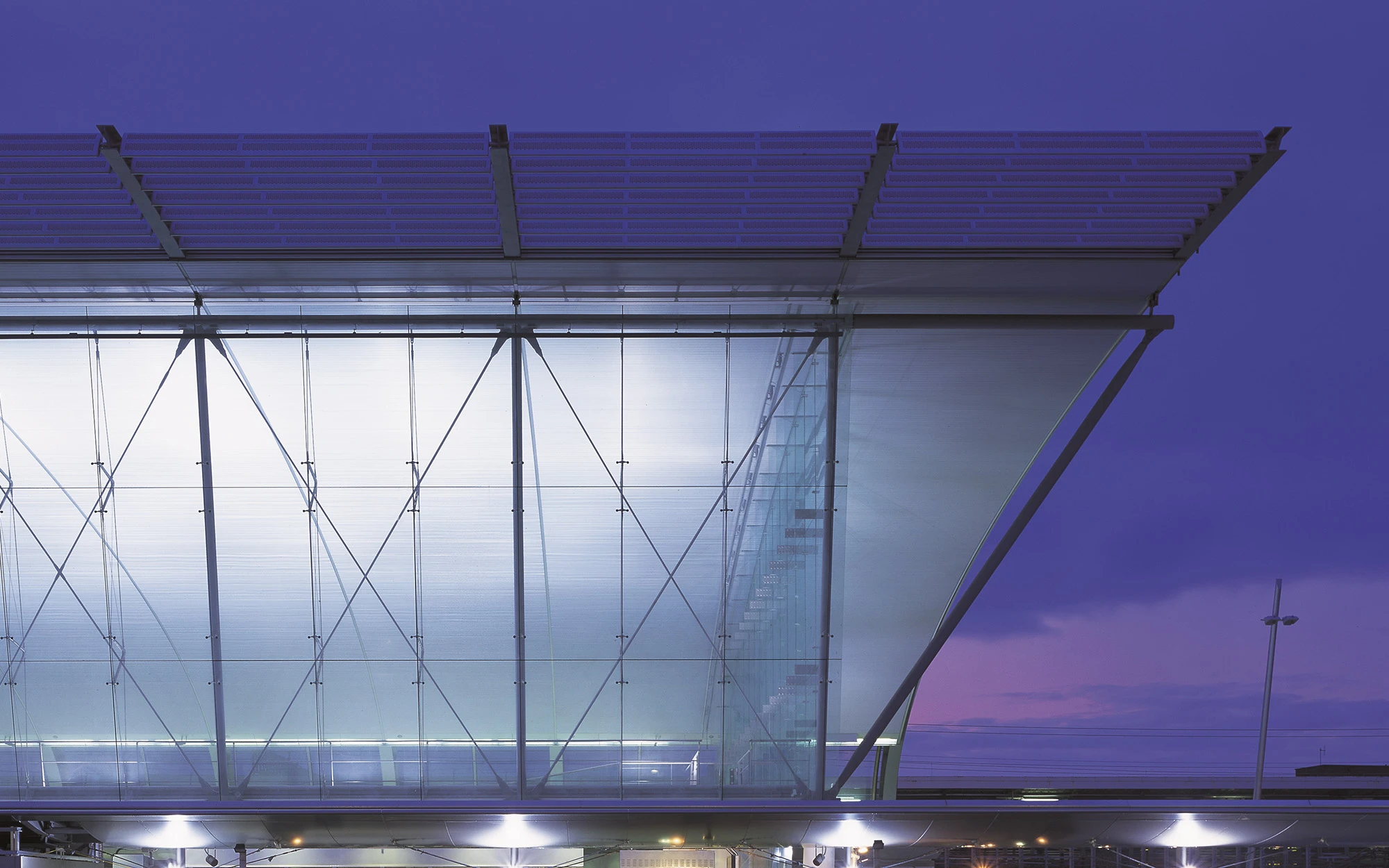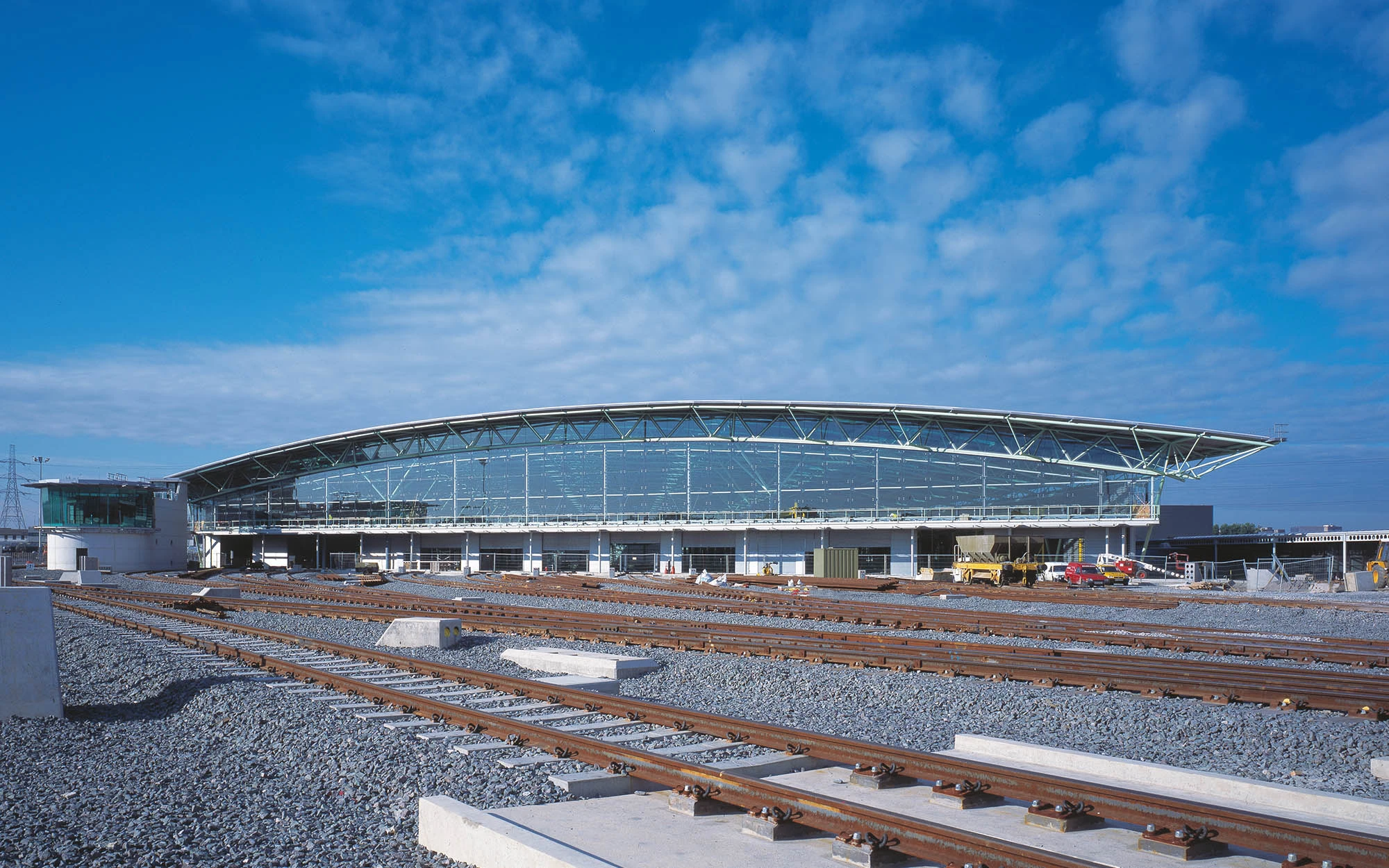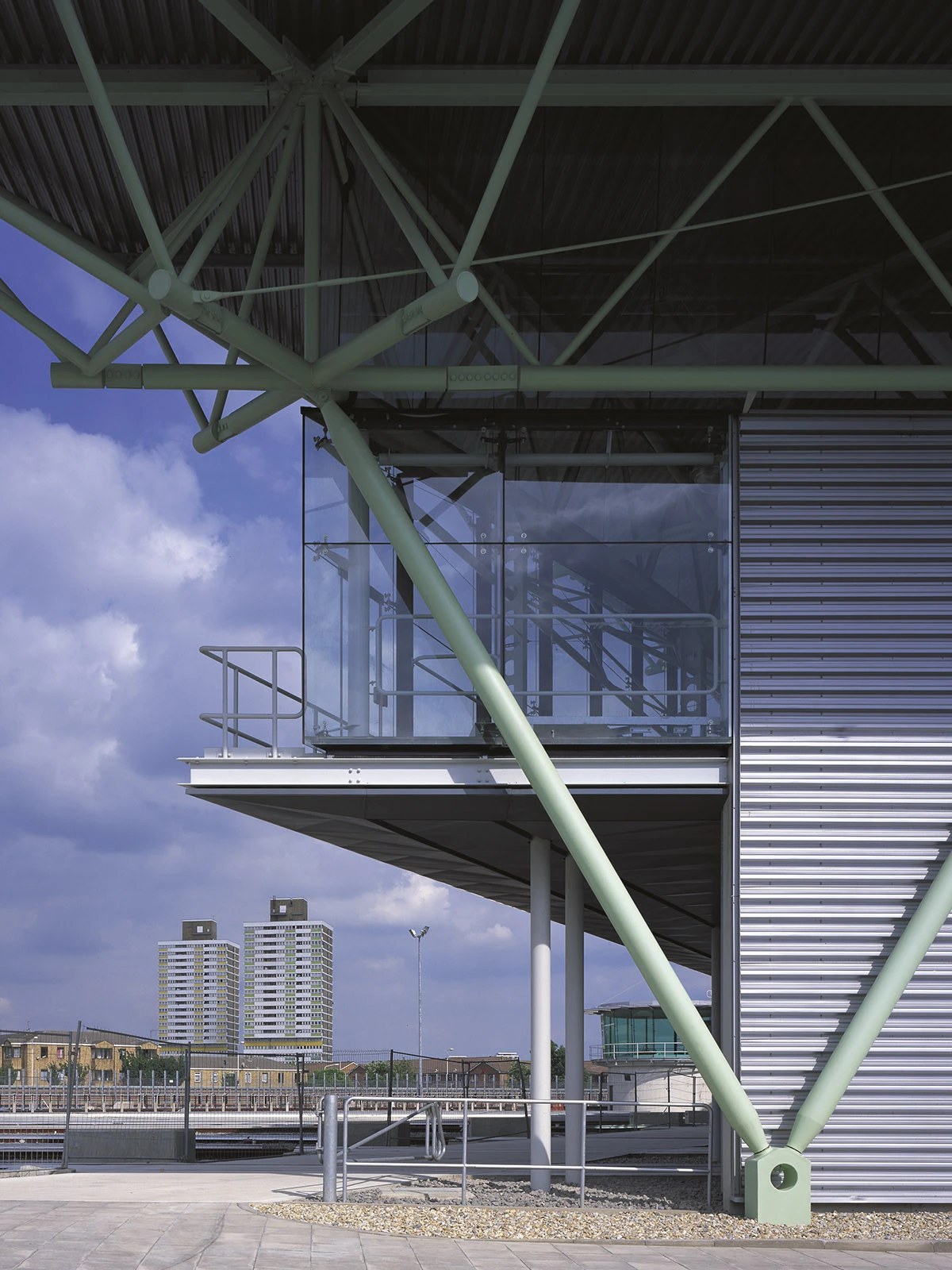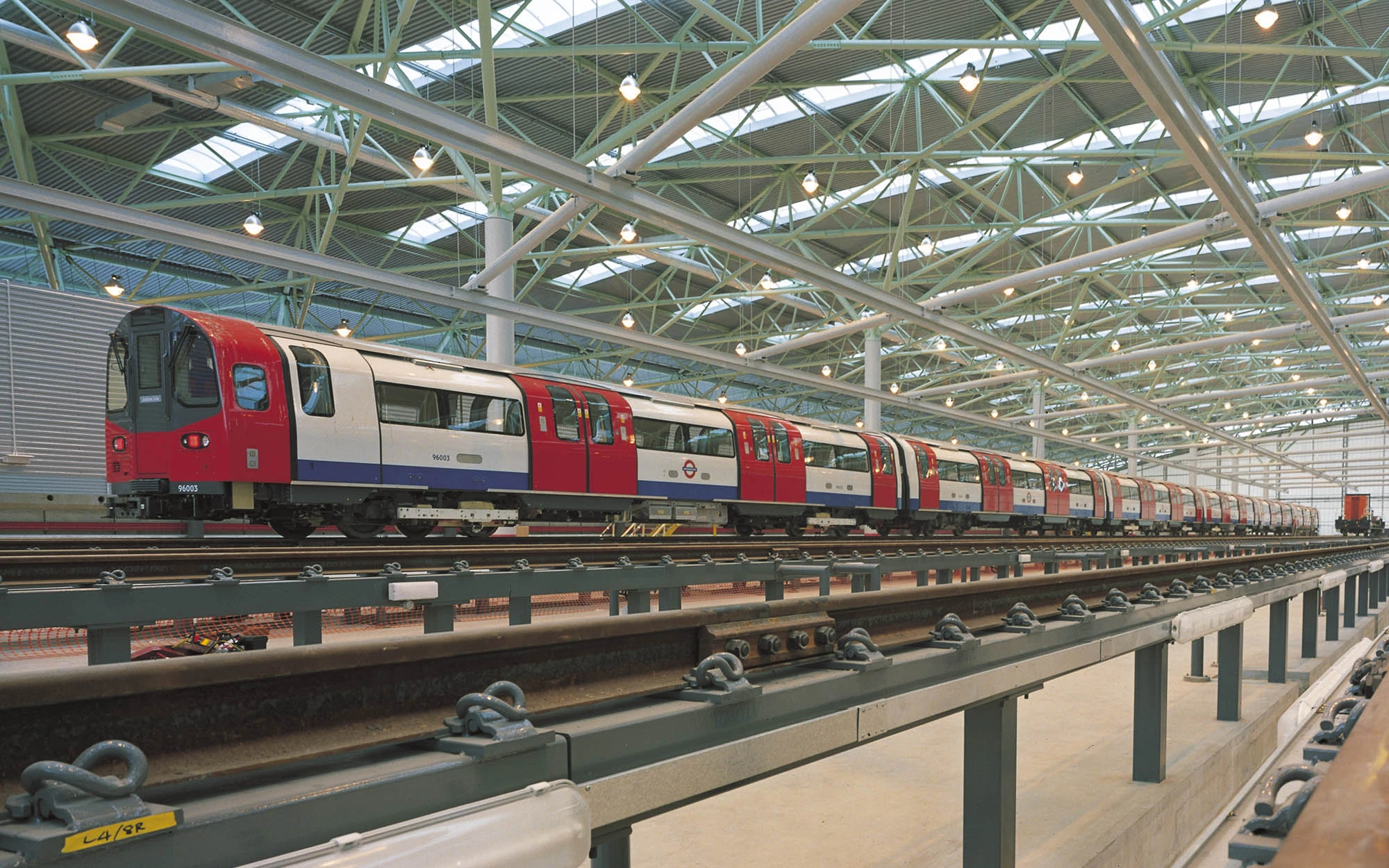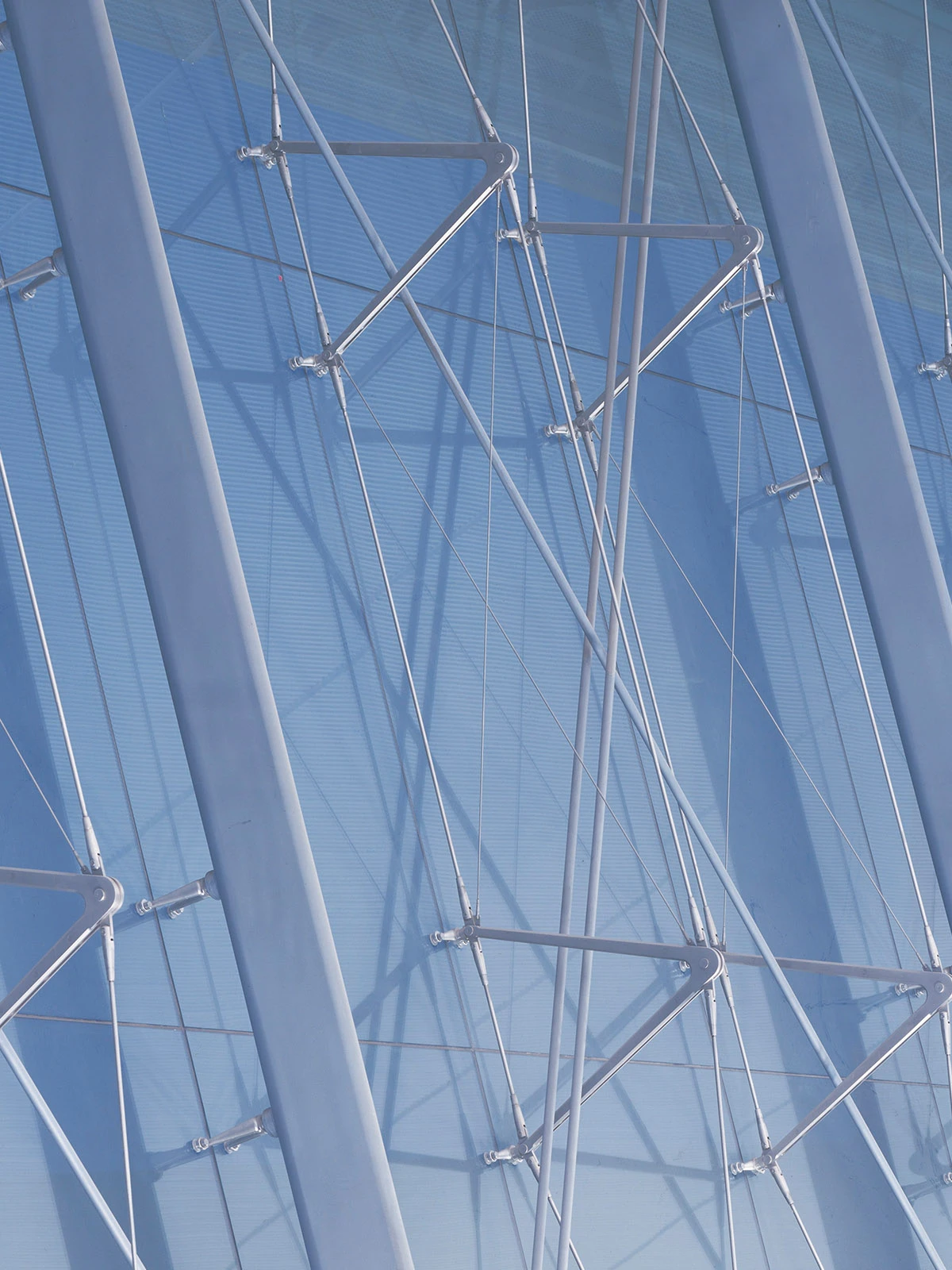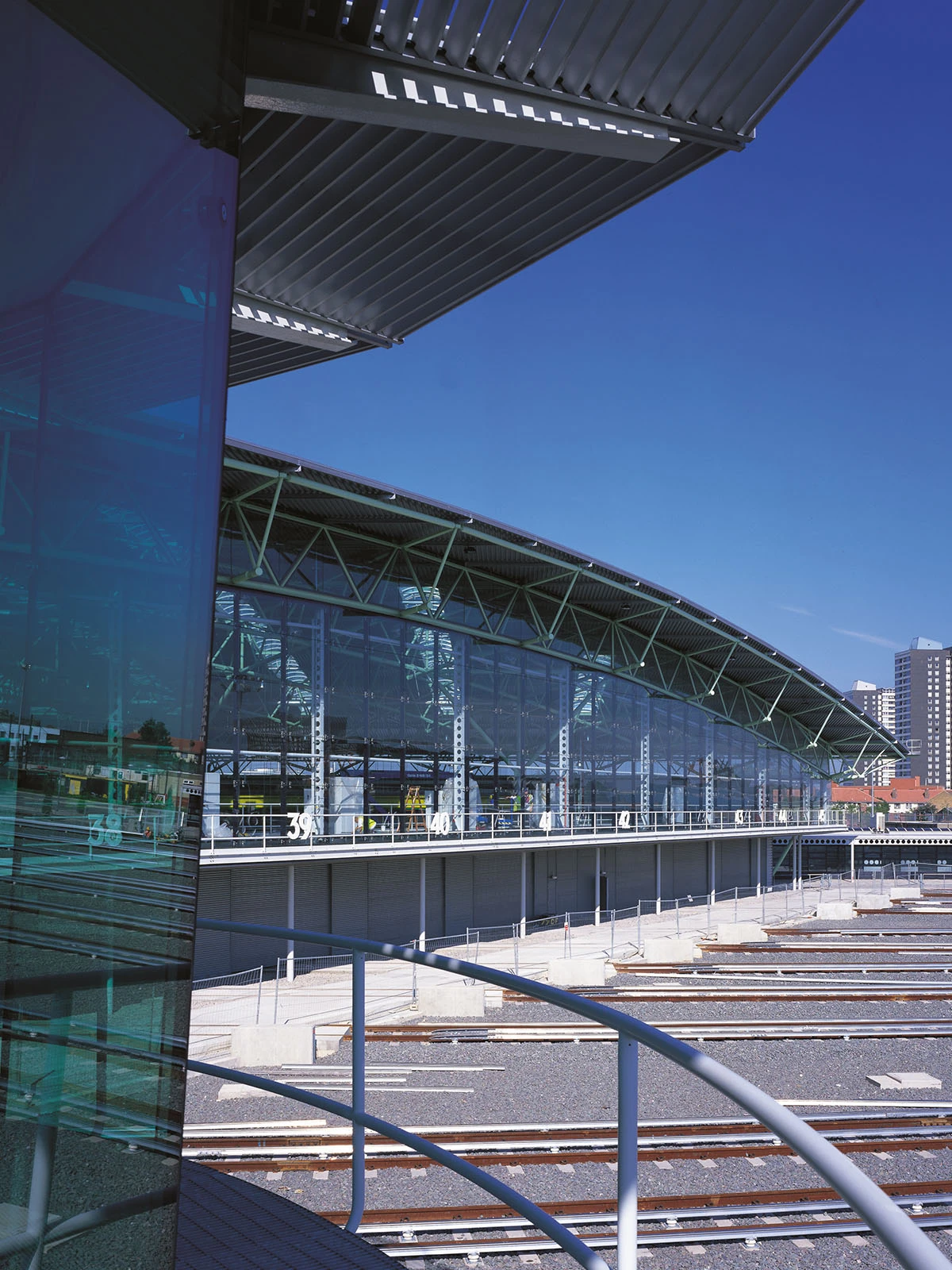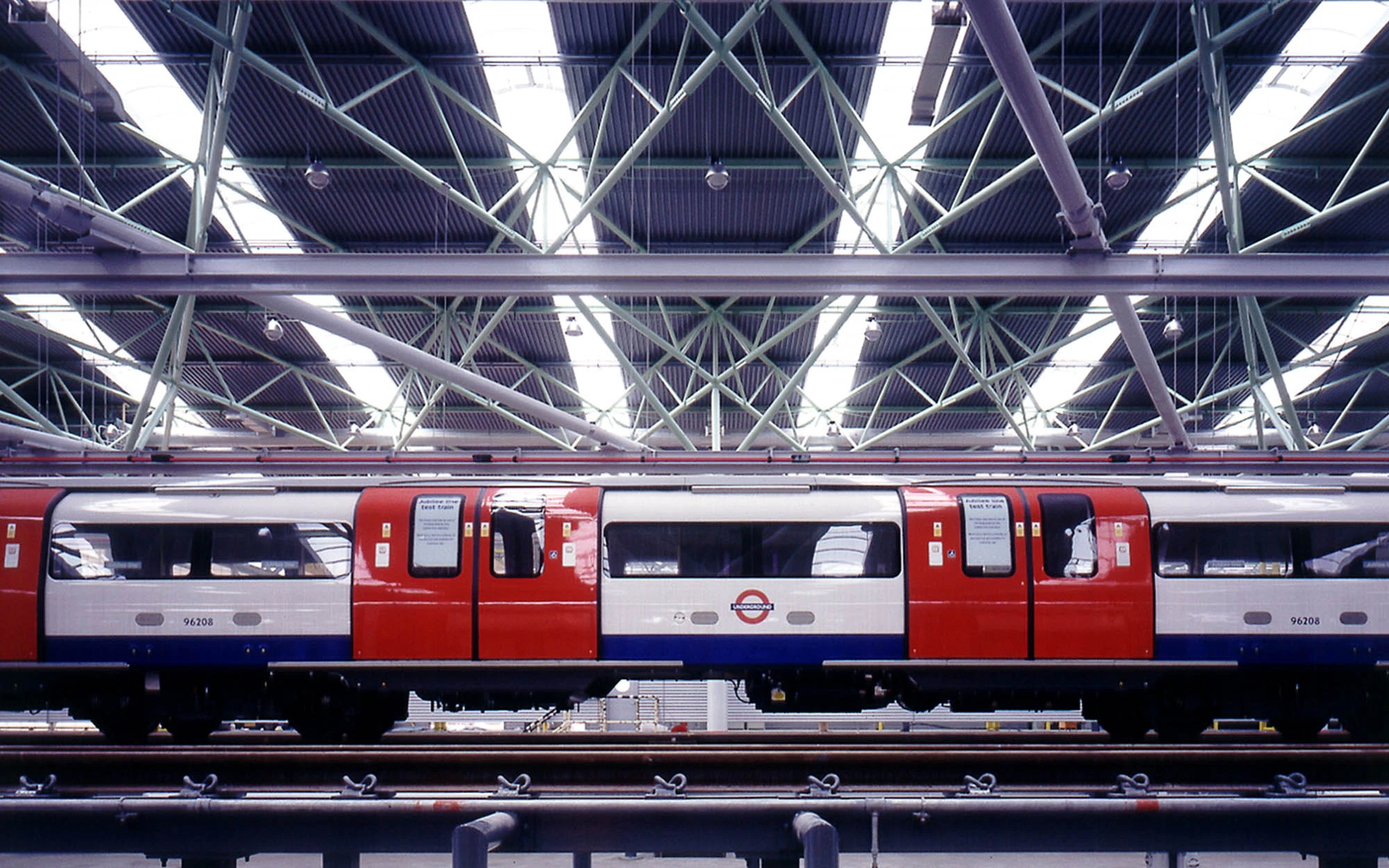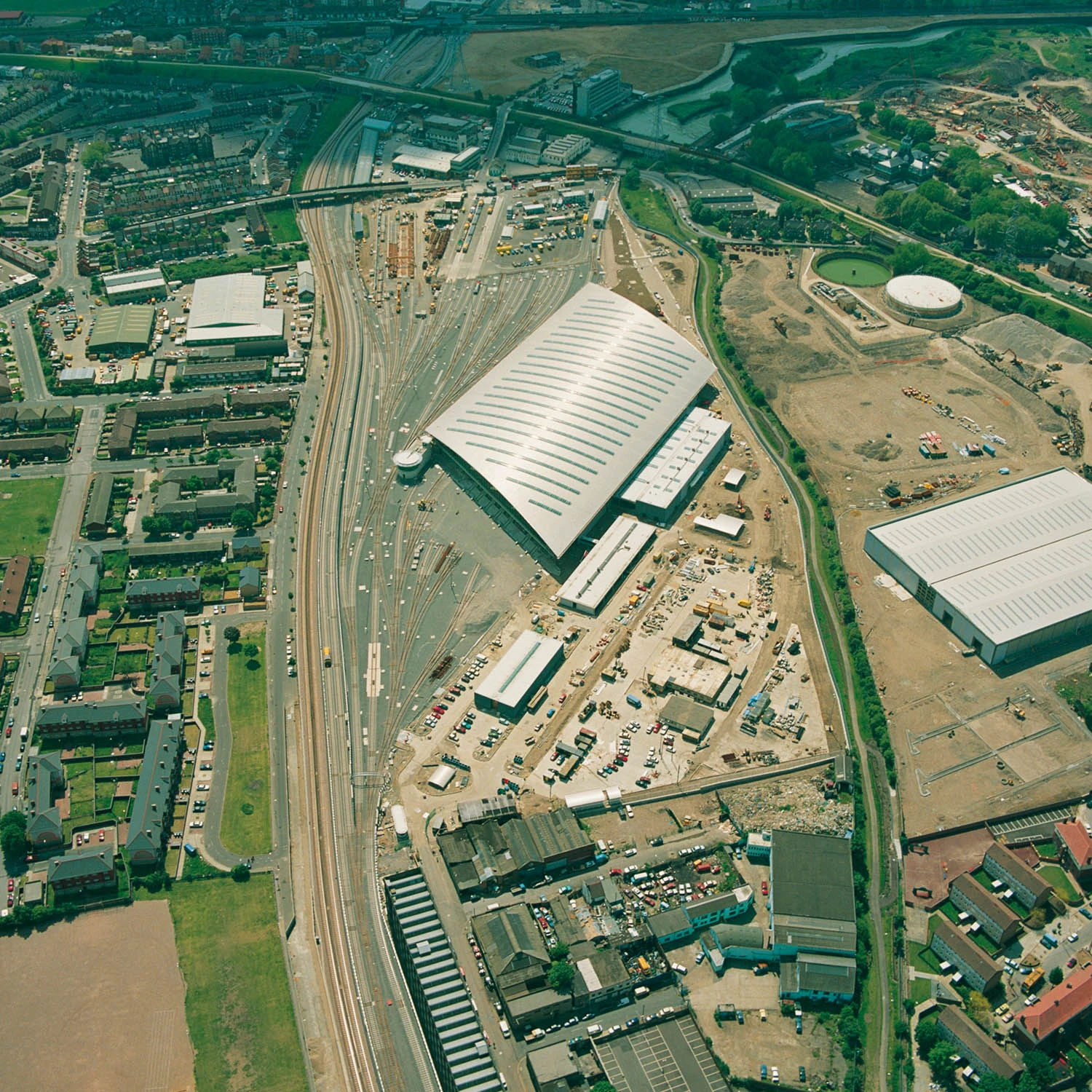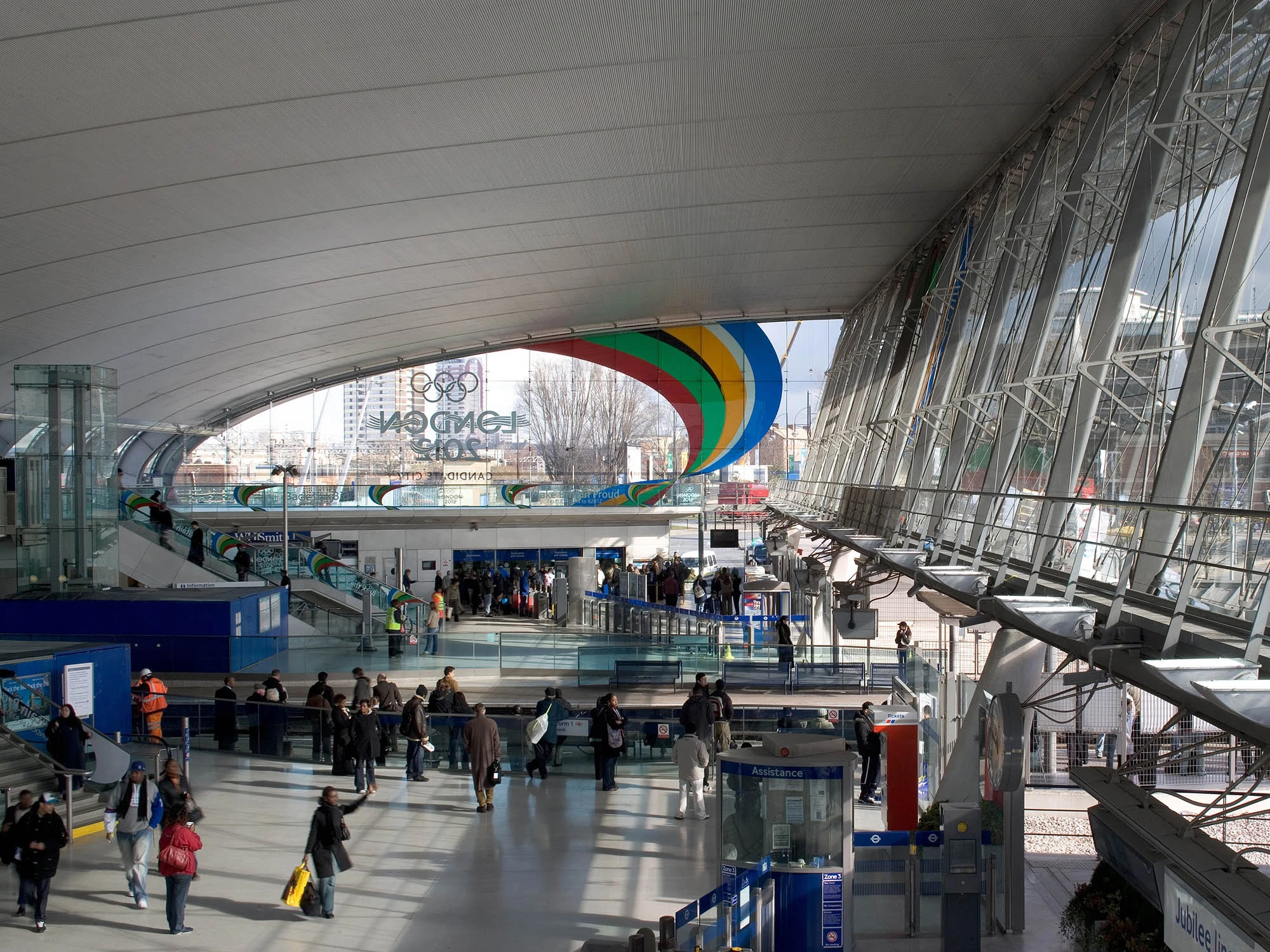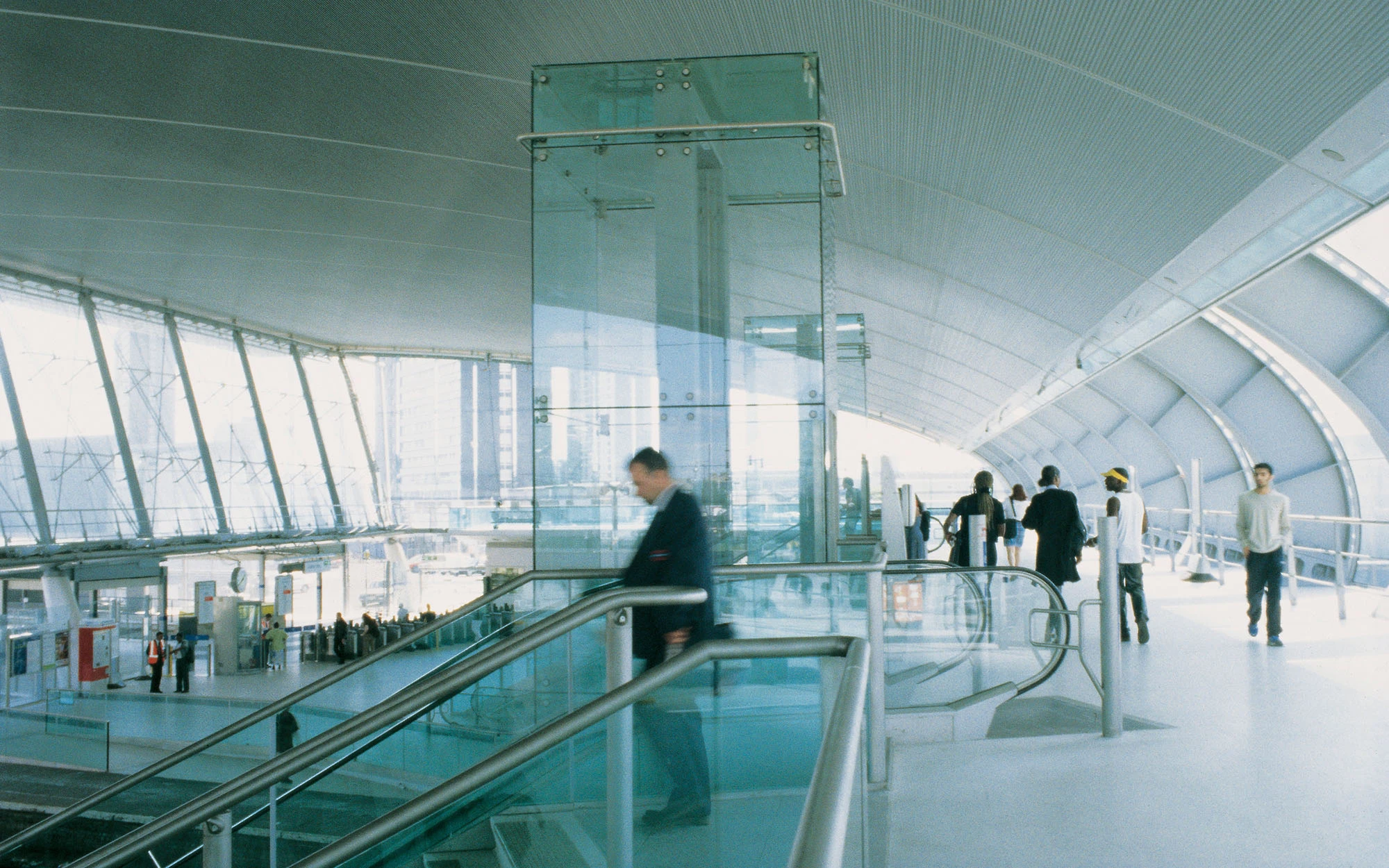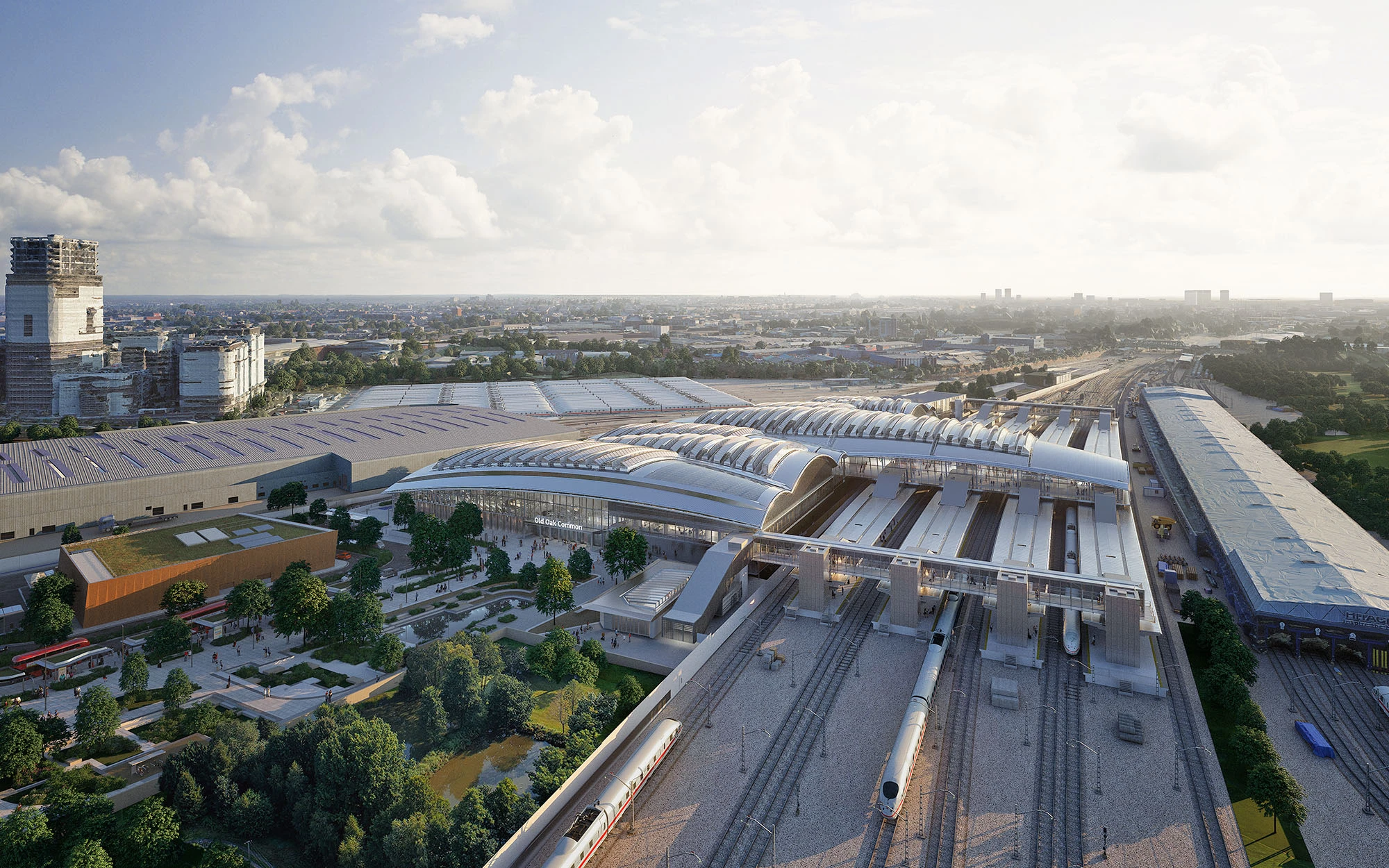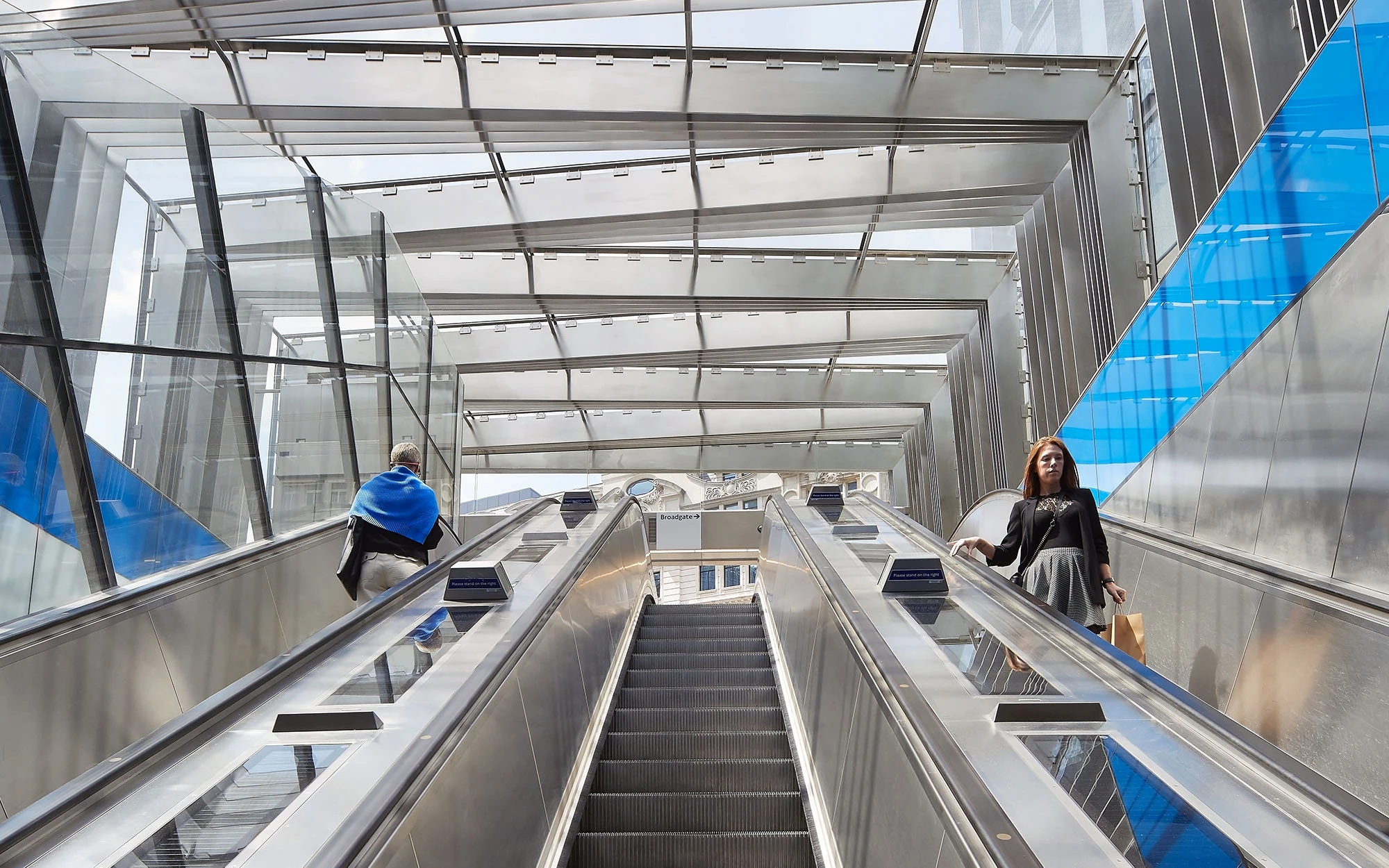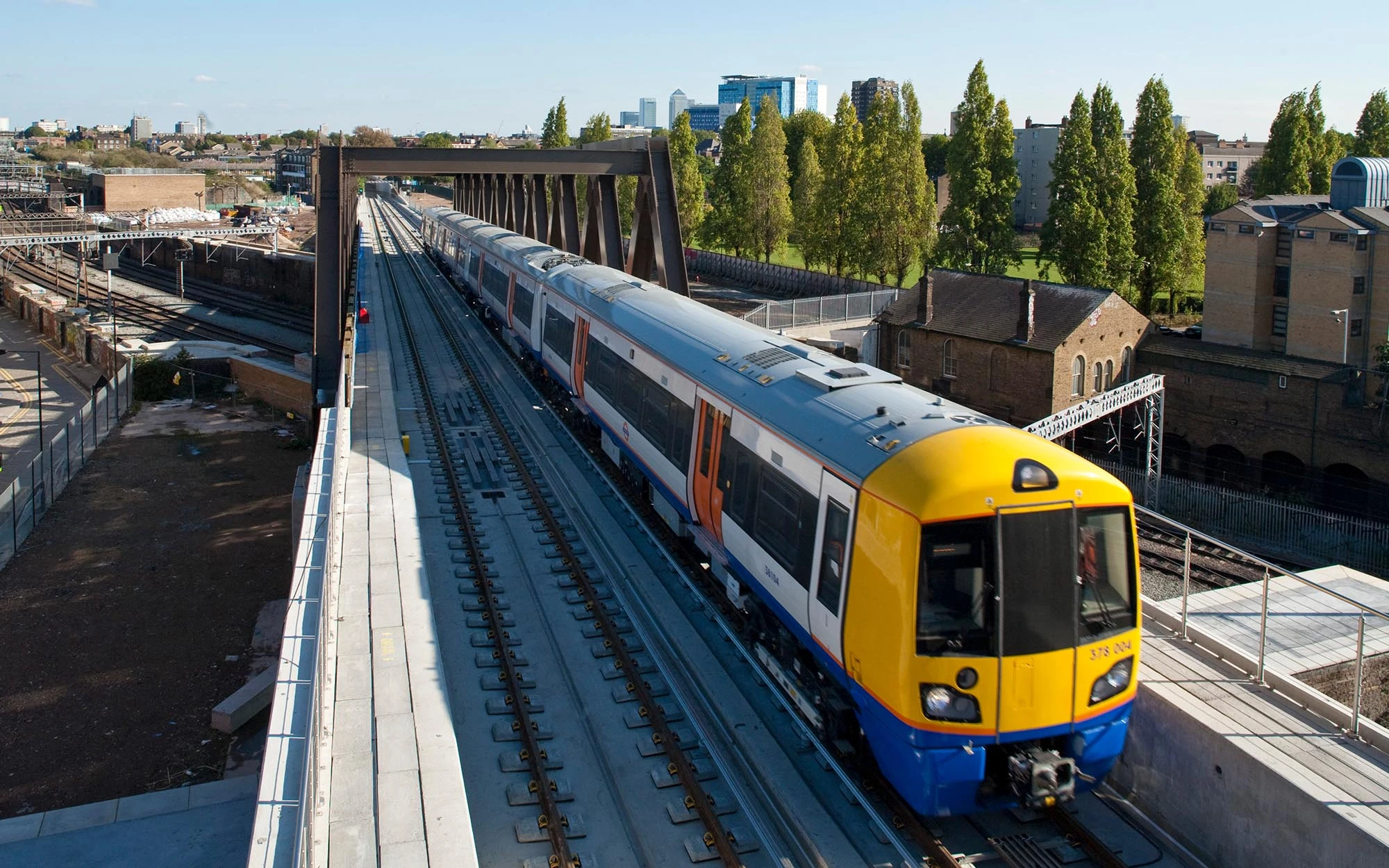We first gained in depth experience in this field on two major commissions for London Underground’s Jubilee Line Extension in the 1990s.
The project enjoyed the enlightened architectural patronage of commissioner Roland Paoletti, who insisted on high quality architecture both above and below ground for each station, which would nevertheless share an underlying philosophy and essential elements. WilkinsonEyre designed the terminal station at Stratford and the new train servicing depot nearby.
Stratford Market Depot was one of the first buildings to be completed on the Jubilee Line Extension and was WilkinsonEyre's first major new-build project. Won as the result of a design competition, the brief called for a complex providing train maintenance and stabling facilities alongside extensive office and ancillary buildings. A 'supershed' was the ideal solution for the main train shed – an industrial building of considered design, providing flexible, durable space.
The economical long-span structure provides good daylight and eight metres of clear headroom above the tracks. The parallelogram shape of the building suggested the use of a diagrid rather than a conventional orthogonal grid, and this generated the concept for a space-frame roof. This is supported by tree-like columns which spread the load onto the v-shaped supports at the perimeter, and is cut with diagonal slit windows allowing sunlight to flood the space below.
The redevelopment of Stratford Regional Station as the Jubilee Line’s new terminus was also won by competition. The challenge was to develop functional yet beautiful railway architecture in the heart of the public domain. The station would later act as the main arrival point for the visitors to the London Olympics 2012.
The form of the building is a curved roof, springing from an upper level, which sweeps up to a tall glazed wall orientated toward the town centre and the approaching railway tracks. This extruded form creates a single major space which unifies the disparate elements and identities of the various train services using the station.
It also allows solar assisted natural ventilation in the main space, via a void in the roof through which air is drawn by the stack effect created as the sun heats the outer layer.
Both structures have served London Underground and the travelling public well, valued components of the Jubilee Line’s rich architectural legacy.
